Are you considering adjusting your rental rates for the upcoming season? It's essential to communicate these changes effectively to your tenants, ensuring they understand the reasons behind any adjustments. A well-crafted letter can make all the difference in maintaining a positive relationship while also safeguarding your rental income. Curious about how to write the perfect seasonal rent adjustment letter? Read on for some helpful tips!
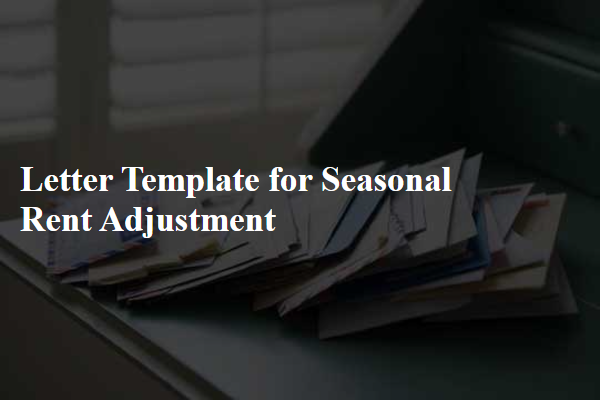
Current rental agreement details
Seasonal rent adjustments can significantly impact the rental agreement between landlords and tenants. Standard rental agreements often include a provision for adjusting the rent periodically, commonly on an annual basis, or linked to inflation metrics such as the Consumer Price Index (CPI). For example, a standard one-bedroom apartment in New York City might be subject to rent increases of 1.5% to 3% annually, based on local housing market trends. Additionally, seasonal factors like tourist seasons in coastal towns, such as Cape Cod, can lead to increased demand for rental properties, prompting landlords to adjust rates accordingly. These adjustments usually require written notice, often 30 to 60 days in advance of the new rental period. It is crucial for both parties to review local rent control laws that may affect these adjustments.
Proposed rent adjustment and reasoning
Proposed rent adjustments often reflect seasonal changes in demand for rental properties. For instance, in popular tourist destinations like Aspen, Colorado, winter months see increased interest in vacation rentals, leading to potential rent increases. Conversely, summer may bring a decline in occupancy, prompting landlords to consider lowering rents to attract tenants. Annual market surveys can provide statistical evidence, showing current average rental rates fluctuating by as much as 15% between peak and off-peak seasons. Current economic factors, including inflation at 3.7% and regional cost of living increases, also contribute to adjustments. Clear rationale and transparency in communication are crucial for fostering positive relationships between landlords and tenants during such discussions.
Effective date of change
Seasonal rent adjustments influence both landlords and tenants, typically aligning with routine tenancy reviews. Notification of rent adjustments, often communicated via formal letters or notices, includes effective dates, usually specified at the beginning of a new month or lease term anniversary. For example, a landlord may issue a rent adjustment notice on March 1st for an increase beginning April 1st. Clear guidelines regarding local laws, like those enforced by the Fair Housing Act, require proper notice periods, often 30 days in advance. Seasonal fluctuations, particularly in resort areas such as Aspen, Colorado, can lead to changes in rent prices based on demand cycles, holidays, or local events. Understanding the effective date of change helps tenants budget accordingly and ensures compliance for landlords.
Contact information for queries
Seasonal rent adjustments can significantly impact tenants and landlords alike, particularly in highly populated metropolitan areas like New York City or San Francisco. Many landlords, in accordance with local regulations, may choose to revisit rental rates during specific peak seasons, such as summer months when demand often skyrockets. Current lease agreements typically stipulate the conditions under which these adjustments may occur, including specific notice periods, which are commonly 30 days. It is crucial for tenants to understand their rights regarding these changes and for landlords to communicate these adjustments effectively to avoid disputes. Contact information provided for queries should include a direct phone number and professional email address, ensuring timely and clear communication.
Closing with appreciation and professionalism
Seasonal rent adjustments reflect changes in rental market dynamics, influencing landlords and tenants' agreements within specific time frames. Typically, adjustments occur during lease renewal periods, often coinciding with peak seasons in locations like coastal resorts or ski towns. Seasonal trends, such as summer tourism spikes in Cape Cod or winter sports influxes in Aspen, can lead to varying rent prices. Clear communication about these adjustments is essential for maintaining good tenant relationships, ensuring that both parties understand the rationale behind price changes, and fostering a professional atmosphere throughout the leasing process.

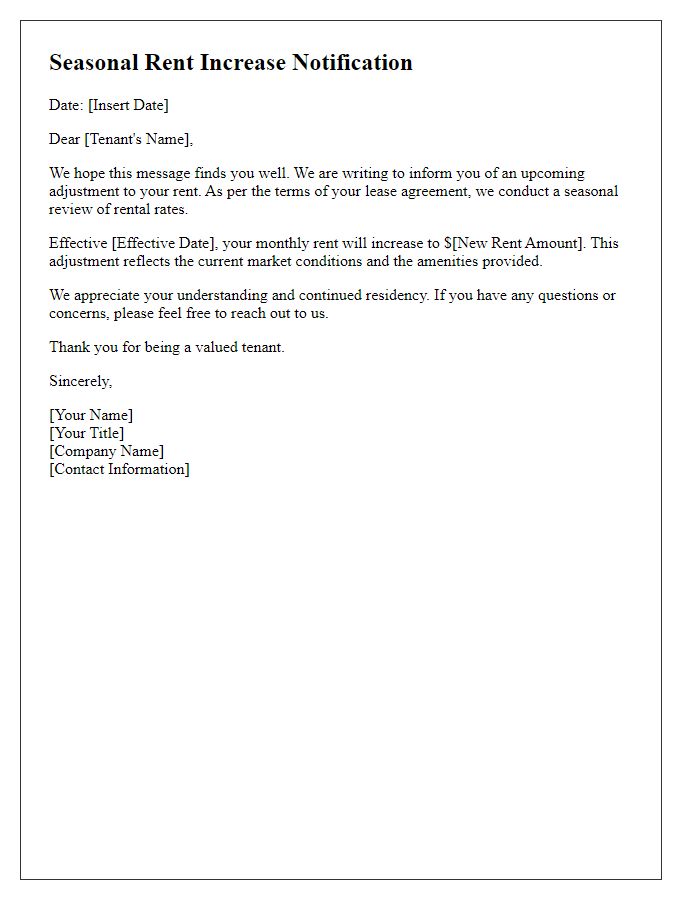
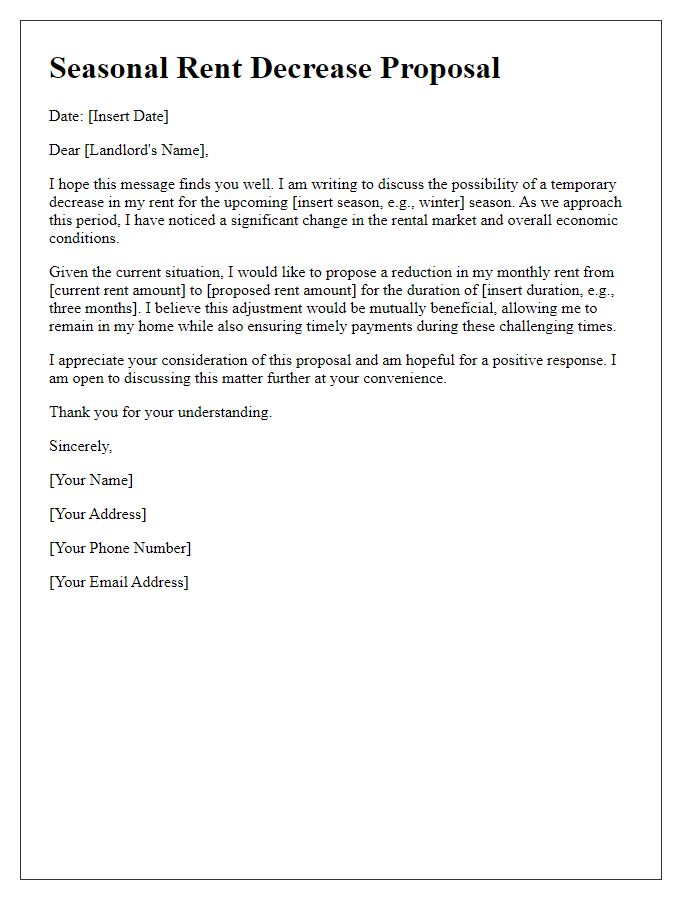
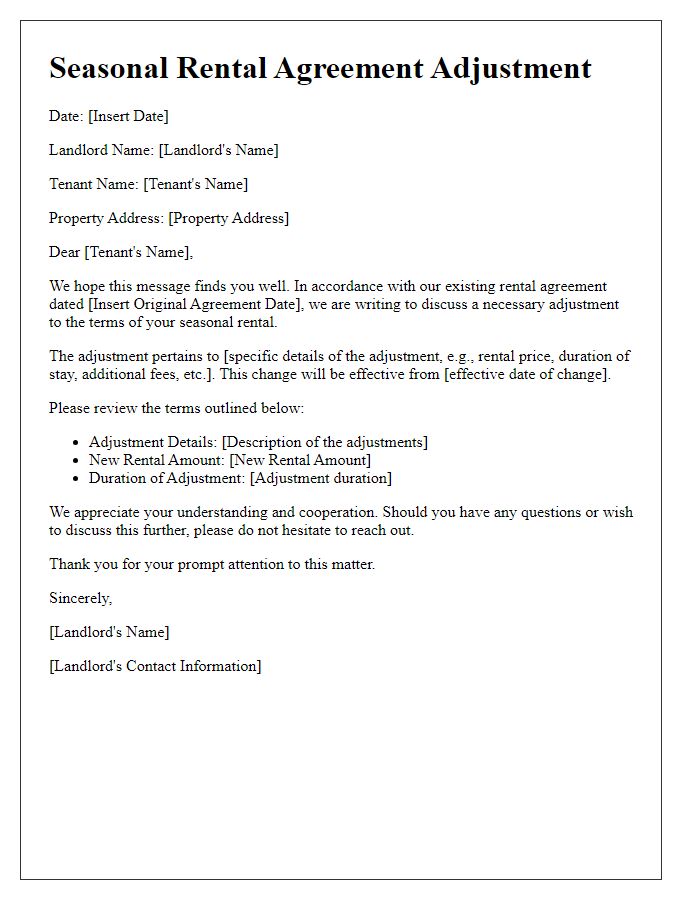
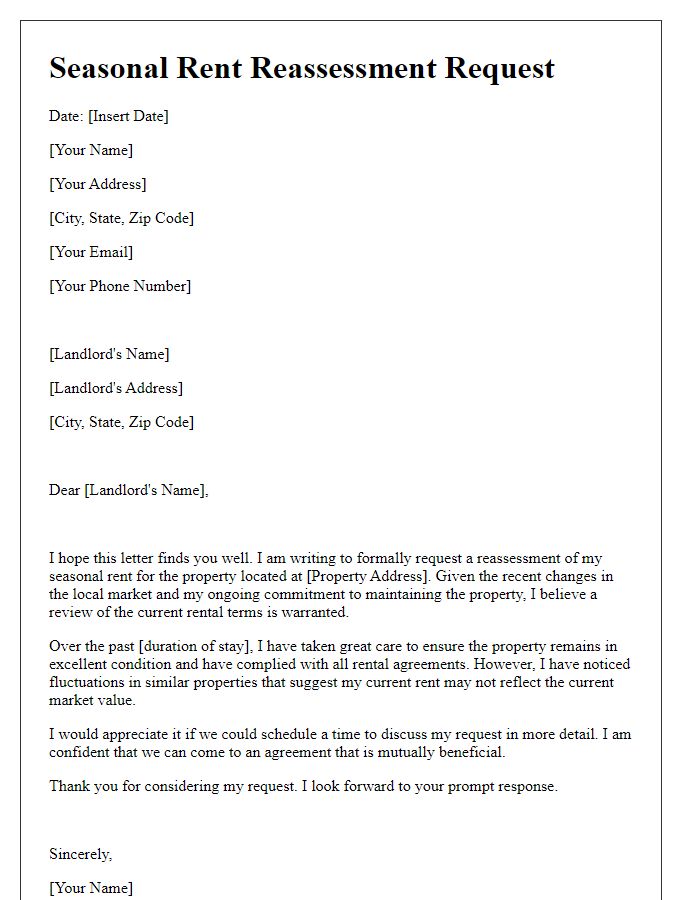
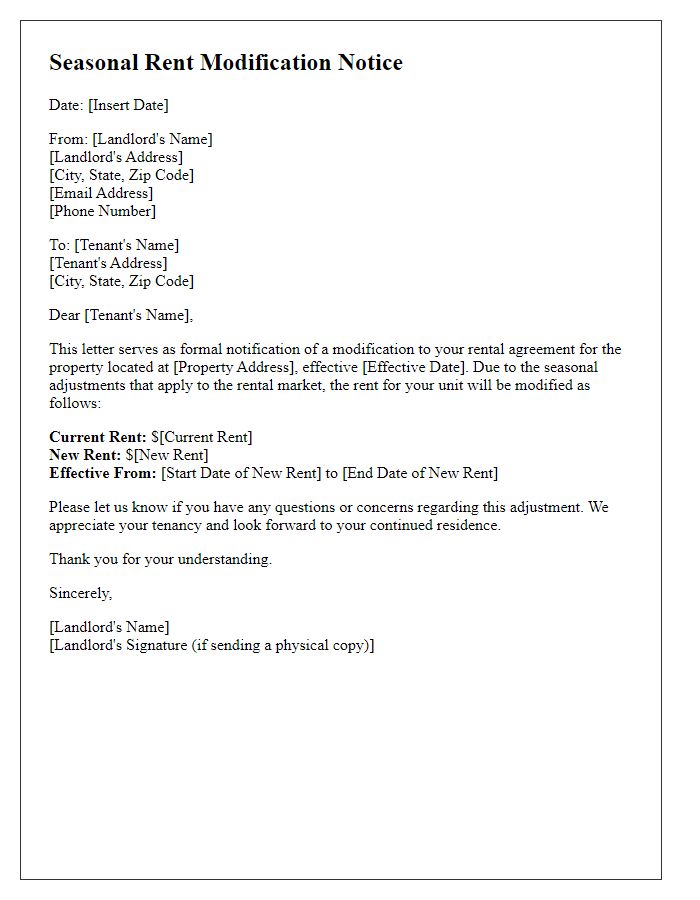
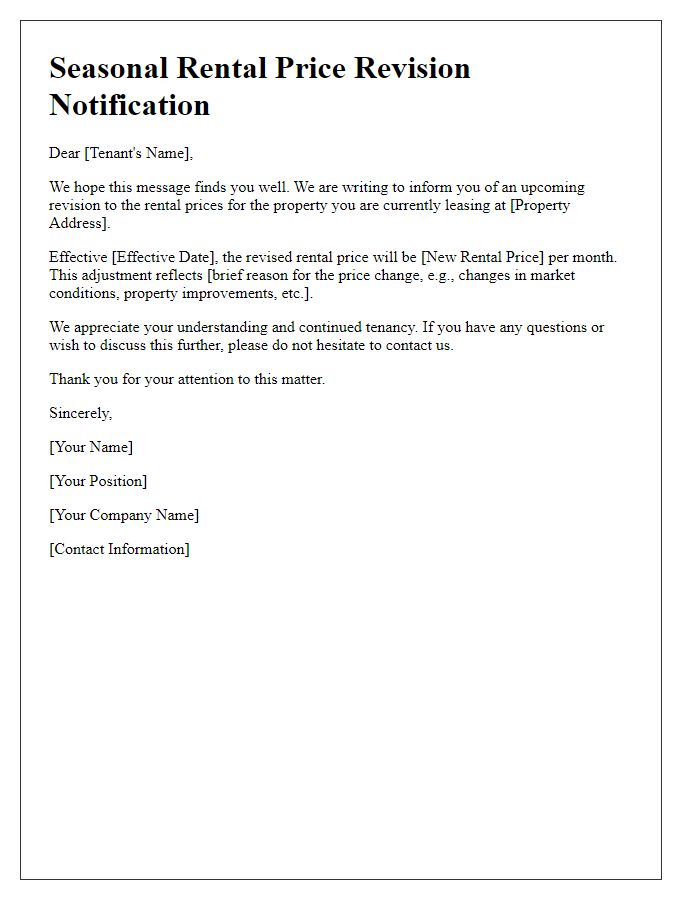
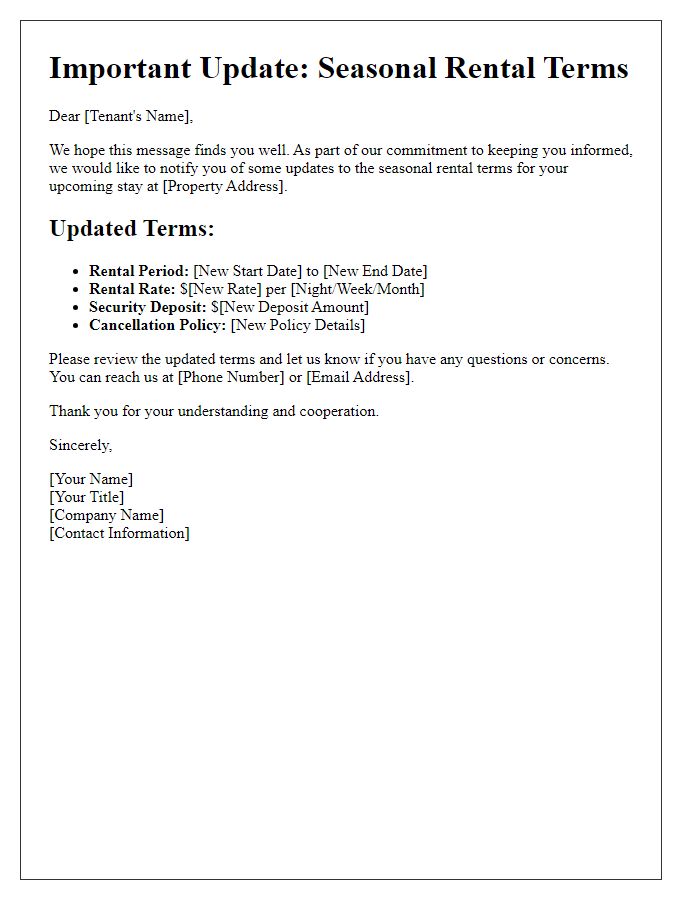
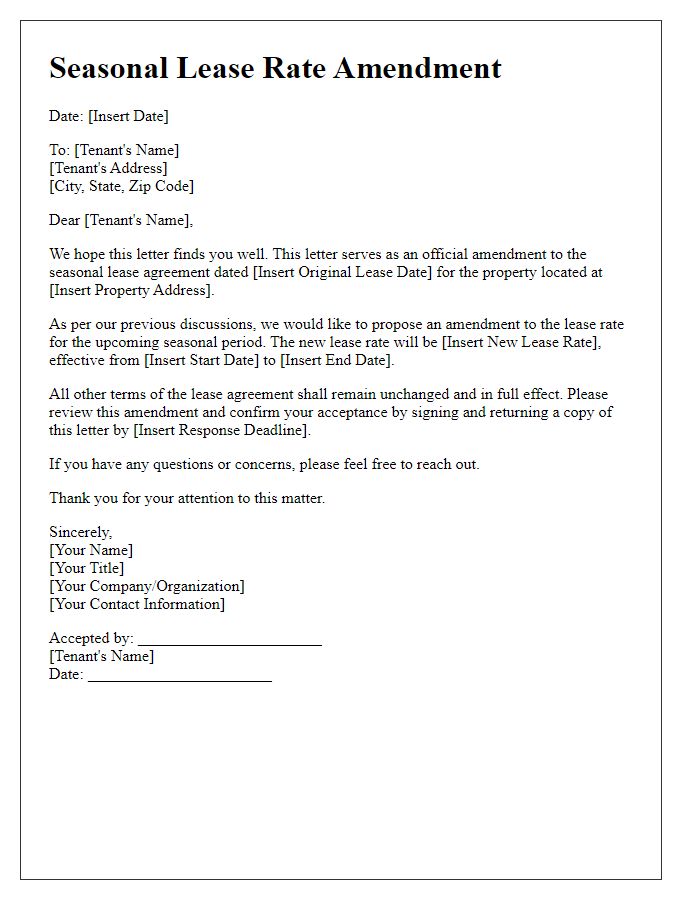
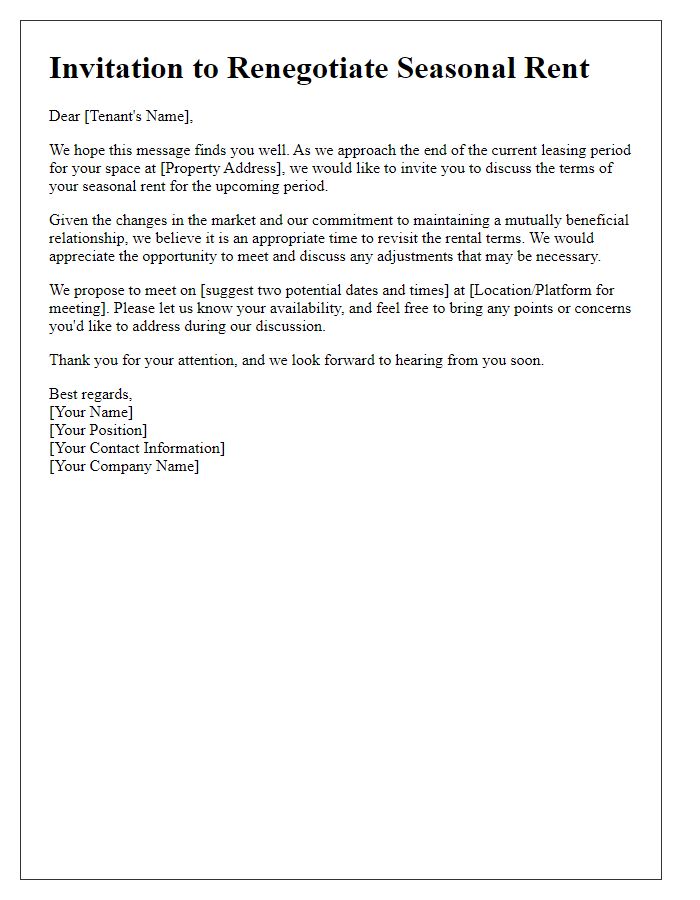
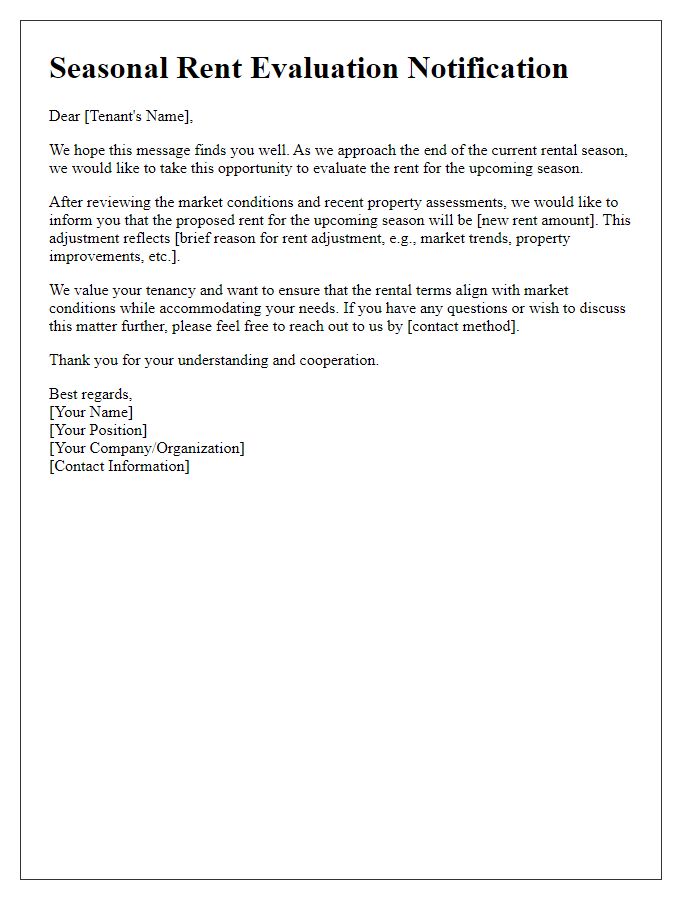

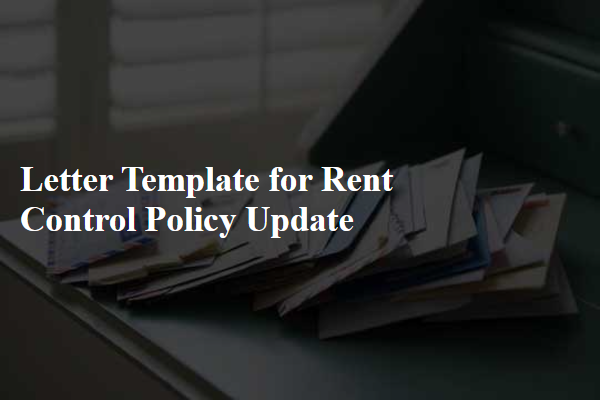



Comments